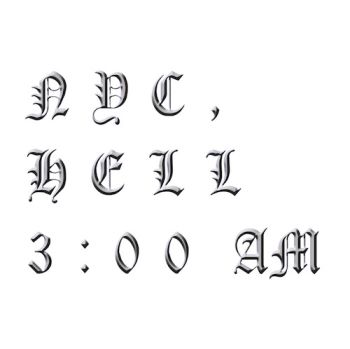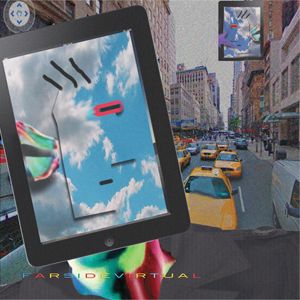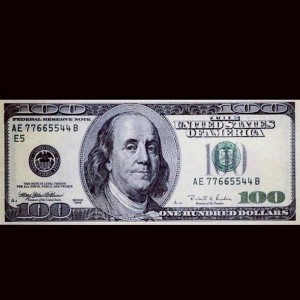Hell is a Place on Earth
NYC, the naked city with 8 million stories, the place where if you make it, you can make it anywhere else, America's cultural capital of cultural capital, where the towers once stood, a place both utopian and dystopian at once. A place of significant economic divide, homelessness, joblessness, and crime (despite the reports that state its decline). Contrastingly there are zones of urban decay and urban promise, and in some neighborhoods they're right beside one another, and one of the few places where you can be pressed against other people in your daily commutes and feel utterly and completely alone. Hell, where the bad behaving, non-believers are banished to by God… FOREVER. You don’t want to go there, at least if you’re God fearing/loving. There are 9 concentric circles of it, the permanent “state of non-existence”, fire and brimstone. The Devil lives there. 3:00am, the end of the party/the beginning of the after-party, when insomnia becomes ever more vivid, lonely and strange, or in folklore of yore, the hour of the wolf, the witching hour.

(NYC Hell, 3:00am LP cover)
NYC Hell 3:00am. A place, a time, an idea. The new album by James Ferraro is as rooted in this sense of time and place, as it obscures it. The album uses the imagery it evokes as a means of expressing tormented innervisions, which (as the title implies) are shared ones. Its 16 songs reflect a strange duality, of feeling disconnected from and yet somehow apart of, a common metropolitan narrative. It’s like a reimagined hypnagogic soundtrack to Martin Scorsese’s After Hours. It travels through physical and psychological corridors of insanity, parody, vulgarity and consumerist critique all in the same breath. After all, the first words and last words you hear on the album, spoken by despondent droids, are money and American violence.
James Ferraro comes from a generation of pop artists classified as "vaporwave", an internet micro-scene of like-minded artists who express ambivalence at the fragmentation of life itself at the hands of the digitalization and the mass commercialization of everything. It's a Tumblr-esque collection of the outdated sonics of muzak and late 80’s smooth jazz, paired with the iconography of discarded pop culture artifacts like big budget sci-fi movies, clip art and commercials. By sampling our cultural runoff and fetishizing forgotten machines of the past, a new kind of electronic music movement was born in the late aughts, a strange yet playful online subculture. James Ferraro is the movement’s progenitor.

Far Side Virtual is perhaps Ferraro’s best-known project. It was The Wire Magazine’s favorite album of 2011. But Ferraro isn’t a new artist by any stretch. The popularity of Far Side Virtual came after a dizzying number of independent releases, mainly on CD-R and cassette and he was already a staple in the lo-fi underground music scene. Using the tools of commodification like the kind of cheesy keyboard sounds you’d hear scoring a corporate informational VHS, Far Side Virtual like all of James Ferraro’s music communicates what is already visible in mass culture: Rapture, terror, comedy, revelation, aloneness.
Repurposing sounds, and feelings from and about techno-culture makes him a peer of another digital excavator Oneohtrix Point Never. OPN also uses digital technology to the point of Dada-esque abstraction, expressing at once computers’ capacity for representation and its shortcomings. I saw the two artists together in concert once in 2010. Opening for Oneohtrix Point Never, Ferraro played subtle keyboard chord variations on top of a noticeably out-of-time drum loop. His (anti) performance became increasingly more ludicrous (his acid washed jean-on-jean attire and his afro not withstanding) yet entrancing by the minute. As I became more zoned out and captivated by his keyboard drones, unaware of the time that had elapsed, he concluded after 30 minutes, never once deviating from this one idea for the entire duration of the set. Just that one beat and those dated synth sounds. This is the kind of détournement that's par for the course on Hell NYC 3:00am his newest album.
(One of three trailers for the album created by Ferraro)
At a glance, these songs might seem juvenile but the connections Ferraro is making in them are anything but. Like his recent mixtape Cold, there is a lot of amateurish (yet achingly sincere) singing. But any shortcomings he has as a singer don’t distract from the feelings he dials into: longing, sadness, fear, urban decay and isolation. Like James’ previous work on albums like Last American Hero or Sushi, NYC Hell 3:00am is as much about context as it is about subversion. Sonically, it's like a more self-aware, and less far-reaching than How to Dress Well. Where How to Dress Well’s music attempts to pay tribute to urban music to the point of pretention, Ferraro's appropriation of R&B music tropes comes across as totally authentic, and his lack of proficiency as a vocalist becomes his secret weapon. In terms of production, there are deep beds of synthesizers, hushed drums and soulful distant singing (sometimes auto-tuned and at other times naked and pitchy), conveying the kind of awkwardness and honesty of an early season American Idol audition or a teenager’s webcam cover of a pop song uploaded to YouTube. Recognizing that auto-tune is a device, Ferraro not only uses it on the album to express sadness but to convey a kind of desperate irony in using such a largely popularized tool used to represent melancholy (see “Fake Pain” or “Nushawn”). In this way, NYC Hell 3:00am’s exploration of sadness and aloneness, especially when listened to through digital devices, has the ability of rendering all experiences toxic while listening. Anyone who has walked through any city at 3:00am can visualize and find the distinct alien feeling that the album conveys familiar. James coos “There’s life in the empty city” on the subterranean “City Smells” and acts as a kind of desperate declaration. While “Upper East Side Pussy” and “Vanity” show sensuality colliding with distinctly urban sensations and situations.

(NYC Hell, 3:00am digital cover)
The unreliability of digital exchanges, an implied theme in Ferraro's earlier work, shows up on NYC Hell 3:00am as well. For Ferraro, technology is a construct that further complicates the connection to everyday lived experiences, and stubbornly mediates relationships that he longs for direct connection with. These ideas, filtered through auto-tune and cold breakbeats all sound a bit like karaoke versions of The Weeknd, rendered all the more ludicrous and sinister in the hands of its maker, an all-the-more affecting commentary on metropolitan malaise when viewed through his eyes. There are random text-to-speech passages littered throughout the album. For instance “City Smells” opens with a clutter of the words Xerox .jpegs pixelated sexy 100% sexy. This conveys the same sort of stone-faced irony of Radiohead’s “Fitter Happier”, spam emails, or the farcical disembodied tweets of @Horse ebooks, communicating the effect of machines gone awry. But computers aren’t the only faulty mechanisms on the record. NYCH3A reeks of existential dread and the looming geopolitical ghosts of the W. Bush era haunt every song. References to the terrorist attacks on 9/11 (in the form of 911 calls, breaking news TV bulletin reports, ambient street noises, and police sirens) are scattered throughout the album to further emphasize how truly dystopian post-9/11 New York City still is if you're paying attention and how it continues to frame broken interpersonal connections. It is in Ferraro’s effectiveness in assembling these feelings, sounds, and ideas that makes the experience of listening so all-consuming.
Hell (not heaven) is a place on earth.

(NYC Hell, 3:00am CD cover)